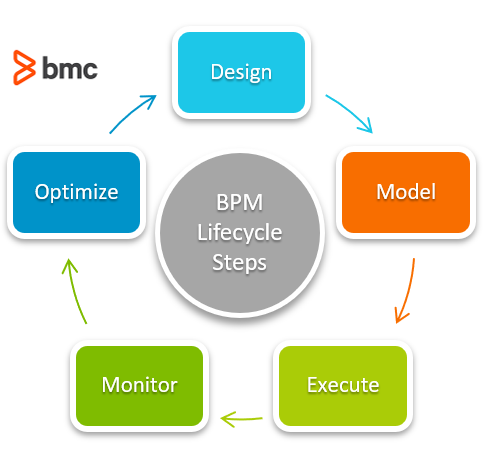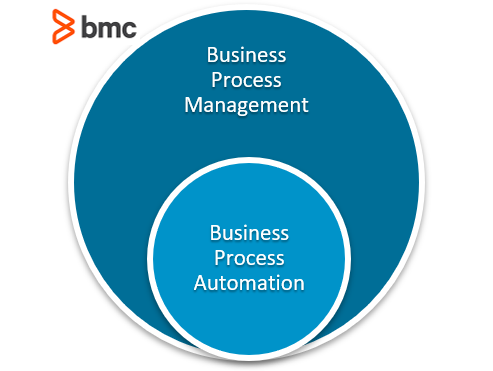Even though the business world’s focus is on technology, what runs business is process. Processes dictate how companies run, whether it’s from order to cash, request to fulfilment, or engagement to onboarding.
Sure, companies might acquire similar technology systems as their competitors. But it’s the way your company establishes and manages processes that has a significant impact when it comes to success, be it revenue, efficiency, or customer satisfaction.
Of course, we cannot discount the impact of technology on process, as digital transformation is upending business models at an astounding rate.
Let’s look at two intersections of process and technology in the form of business process management (BPM) and business process automation (BPA).
What is BPM?
There are many ways of defining business process management. One definition, from AIIM, states that BPM covers how we study, identify, change, and monitor business processes to ensure they:
- Run smoothly
- Can be improved over time
CIO defines BPM as the practice of discovering and controlling an organization’s processes to align them with business goals as the business evolves.
We can think of BPM as an umbrella, a governance approach towards the lifecycle management processes within an organization, from design, modelling, execution, monitoring to optimization.

The BPM Lifecycle steps, as described by EPC, can be summarized as follows:
- Identifying processes, their stakeholders, activities and dependencies.
- Mapping the process elements for visual display and analysis.
- Implement the process through systems, roles and training.
- Collecting and analyzing data on process performance.
- Make improvements to the processes based on outputs from the monitoring step.
What is business process automation?
According to Red Hat, business process automation extends IT systems to automate processes tailored specifically to the needs of the organization.
Similarly, Gartner defines BPA as the automation of complex business processes and functions beyond conventional data manipulation and record-keeping activities, usually through the use of advanced technologies.
In simple terms, business process automation is about applying technology to process activities that are routine and manual in nature in order to gain:
- Efficiency
- Effectiveness
- Cost reduction
- Competitiveness
- Compliance
- Additional benefits
Research from IBM indicated that cost savings between 20% and 50% can be attained from process automation. Some examples of target areas for BPA deployment in enterprises include:
- Sales orders processing
- HR payroll processing
- Debt collections processing
- Customer/user self-service
While BPA required a significant amount of technical expertise for implementation, today we are seeing a proliferation of low-code and no-code solutions that enable non-technical personnel to easily do things like:
- Map workflows
- Develop forms
- Route approvals
These disruptive apps operate through intuitive drag-and-drop capabilities that enable any non-IT staff to easily build and deploy their own automated processes on web or mobile apps.
Driven by advancements in technology and fueled by the current wave of digital transformation, BPA is now evolving by embedding intelligence through artificial intelligence. Enhancements to process automation are currently being led by these cognitive technologies, including:
- Robotic process automation (RPA)
- Machine learning (ML)
- Natural language processing (NLP)
- Predictive analytics
The BPA market is estimated to be worth $232 billion USD by the year 2025.
(Learn more about workplace automation.)
Comparing BPM & BPA
While BPM and BPA are complementary, it is evident that these terms should not be used interchangeably.
BPM is a more general and holistic approach that considers not just technology but the entire process ecosystem to ensure value creation and preservation across the enterprise. BPM does not specify any methodology or approach. Rather, it focuses on the governance of process development, deployment, and improvement within the organization.
You might say that BPM operates from more of a strategic and tactical level, with the continual end-to-end reengineering of business process models. With BPM, the focus is at the organization’s operational model, looking to create and modify all aspects of processes including:
- Organizational structures
- Cost models
- Technology use
- Regulatory compliance
- Customer satisfaction
Note that there are BPM solutions that support management of process lifecycle activities including design, deployment, and monitoring.
On the other hand, BPA is firmly entrenched in the technology aspects, looking to raise the level of productivity within the enterprise by taking advantage of computational capabilities. It is less about modifying core processes—the focus being streamlining and improvement through the use of technology.
BPA can be a standalone activity or part of larger organizational improvement efforts including digital transformation initiatives. Usually BPA is applied to a specific function or area of business where automation of recurring manual tasks can result in gains for the organization in terms of:
- Speed
- Efficiency
- Customer satisfaction
We can therefore consider BPA as a subset of BPM, understanding the two can operate independent of each other.

Related reading
- BMC Business of IT Blog
- Intelligent Business Process Management Suites (iBPMS): The Basics
- What’s BPMaaS? Business Process Management as a Service Explained
- The Importance of Digital Process Automation (DPA)
- 7 Business-Critical IT Policies & How To Implement Them
- BPM vs Workflow Management vs Case Management







